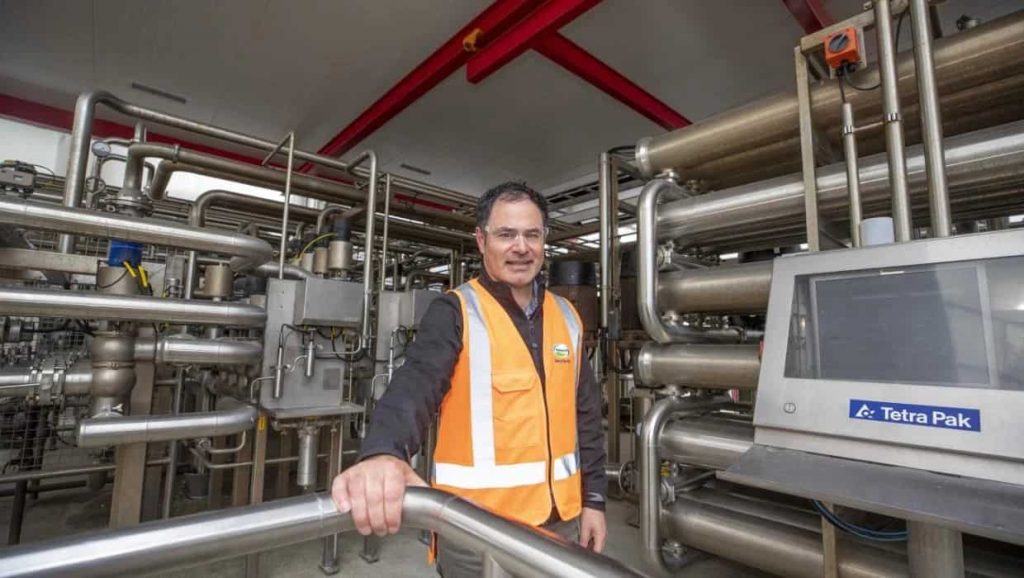The Edendale plant in Southland is protecting itself against future water shortages by recycling about half the water from cow milk and using it in its processing operations.


The Edendale plant in Southland is protecting itself against future water shortages by recycling about half the water from cow milk and using it in its processing operations.
Fonterra lower South Island regional manager Andrew Johns said about 10 million litres of cows’ milk was carted from dairy farms to the plant each day, where it was processed into products including milk powders and protein products.
That milk was made up of 86% water and about half of that water was removed in an evaporation process during processing, and historically sent down the river.
About $10 million has been spent on the project, which launched in August after being designed over 18 months.
In essence, the company purifies the water [from the cows’ milk] through a filtration and disinfection process onsite, and uses it in its milk processing operations for the likes of cleaning its plant.
Edendale used about 10 million litres of water to process every 10 million litres of milk, and traditionally all that water came from an underground aquifer which was also the community’s water source.
But the cow water recovery project was recovering about 2.5 million litres of water per day, allowing Edendale to reduce its take from the aquifer to 7.5 million litres a day, Johns said.
 Johns stands in front of the soon to be established electrode boiler at the company’s Edendale plant in Southland. The boiler will replace one of four coal-powered boilers on the site.
Johns stands in front of the soon to be established electrode boiler at the company’s Edendale plant in Southland. The boiler will replace one of four coal-powered boilers on the site.The underground aquifer, Fonterra’s only previous water source, was vulnerable in a drought because it was only replenished by rain water, Johns said.
As such, Edendale’s ability to reduce its take from the aquifer by also using the cow water in its operations was a good thing, he said.
Edendale was Fonterra’s first large site to be using cow water for its milk processing operations, he said.
Johns believed the $10m spent setting up the project was well spent.
“The site stopping because it doesn’t have enough water is going to cost a lot more than $10m.”
Parts of the Edendale site had been halted in the past due to water shortages, he said.
Legal notice about Intellectual Property in digital contents. All information contained in these pages that is NOT owned by eDairy News and is NOT considered “public domain” by legal regulations, are registered trademarks of their respective owners and recognized by our company as such. The publication on the eDairy News website is made for the purpose of gathering information, respecting the rules contained in the Berne Convention for the Protection of Literary and Artistic Works; in Law 11.723 and other applicable rules. Any claim arising from the information contained in the eDairy News website shall be subject to the jurisdiction of the Ordinary Courts of the First Judicial District of the Province of Córdoba, Argentina, with seat in the City of Córdoba, excluding any other jurisdiction, including the Federal.
1.
2.
3.
4.
5.
eDairy News Spanish
eDairy News PORTUGUESE
